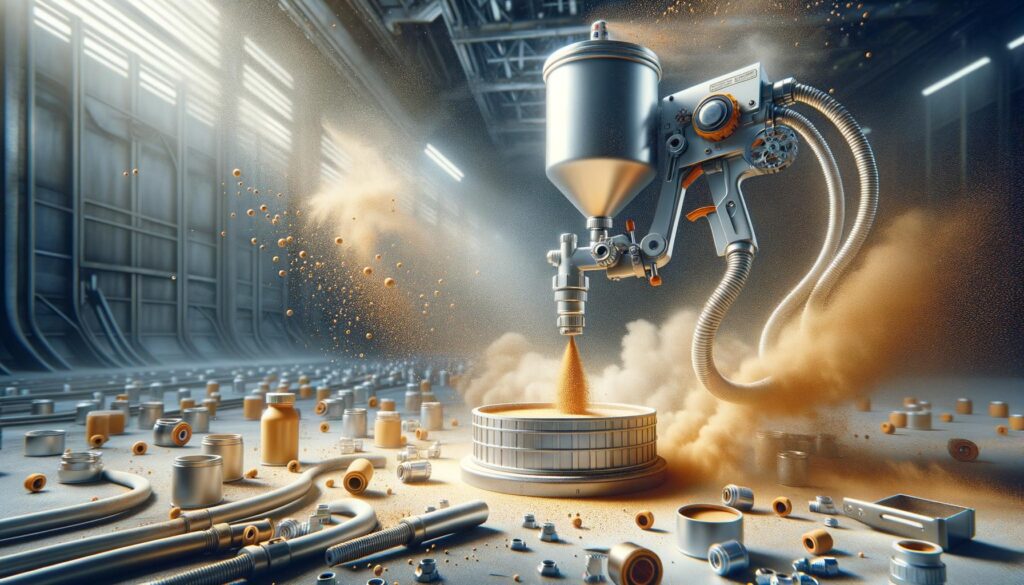Exploring the World of Powder Coating: A Durable and Vibrant Finish
What is Powder Coating?
Powder coating is a dry finishing process that has gained widespread popularity for its durability and aesthetic appeal. Unlike traditional liquid paints, which use solvents to keep the binder and filler parts in a liquid form, powder coating is applied as a free-flowing, dry powder. The process involves a few key steps: preparing the surface, applying the powder, and curing it under heat to allow it to form a hard, durable finish. This method is renowned for producing a high-quality, long-lasting finish that is both environmentally friendly and cost-effective.
The powder used in this coating process is composed of finely ground particles of pigment and resin, which are electrostatically charged and sprayed onto the surface to be coated. The charged powder particles adhere to the electrically grounded surfaces until heated and fused into a smooth coating in a curing oven. The result is a uniform, durable, and high-quality finish that is resistant to chipping, scratching, and fading.

The Advantages of Powder Coating
Powder coating offers numerous benefits over traditional painting methods, making it a preferred choice in various industries. One of the standout advantages is its environmental friendliness. Unlike liquid paint, powder coating does not contain solvents or volatile organic compounds (VOCs), which can be harmful to the environment and human health. This makes powder coating a more sustainable and eco-friendly option.
Additionally, powder coating provides exceptional durability. The finish is resistant to corrosion, chemicals, and weather conditions, making it ideal for outdoor applications. This durability is enhanced by the use of epoxy coatings for durability, which are known for their strong adhesion and protective qualities. The longevity of powder-coated products often translates into cost savings, as they require less maintenance and fewer touch-ups over time.
Applications of Powder Coating
The versatility of powder coating makes it suitable for a wide range of applications. It is commonly used in the automotive industry for coating wheels, bumpers, and other components that require a resilient finish. In the architectural sector, powder coating is applied to aluminum frames and facades to ensure they withstand the elements while maintaining their aesthetic appeal.
Moreover, household appliances and furniture often benefit from powder coating due to its ability to provide a durable and attractive finish. Items such as refrigerators, washing machines, and outdoor furniture are frequently powder-coated to enhance their longevity and appearance. The use of epoxy coatings for durability in these applications ensures that the items remain in excellent condition despite regular use and exposure to various elements.
Powder Coating Process: A Closer Look
The powder coating process consists of several stages, each critical to achieving the desired finish. The first step involves surface preparation, which is essential for ensuring proper adhesion of the powder. This may include cleaning, degreasing, and sandblasting to remove any contaminants or previous coatings.
Once the surface is prepared, the powder application begins. The powder is applied using a spray gun that imparts an electrostatic charge to the particles, allowing them to adhere to the grounded surface. This step is crucial for achieving a uniform coating and minimizing waste. After application, the coated item is placed in a curing oven, where the powder melts and flows into a smooth, hard finish. The curing process also enhances the properties of the epoxy coatings for durability, ensuring that the final product is both attractive and long-lasting.
Choosing the Right Powder Coating
Selecting the appropriate powder coating involves considering several factors, including the intended use of the product, the environmental conditions it will face, and the desired aesthetic outcome. Different types of powders are available, each designed to meet specific performance and appearance requirements.
For example, epoxy coatings for durability are often chosen for their superior adhesion and resistance to chemicals and abrasion. However, they may not be the best choice for outdoor applications due to their susceptibility to UV degradation. In such cases, polyester or polyurethane powders might be more suitable, as they offer excellent weather resistance and color retention.
Ultimately, the choice of powder coating will depend on the specific needs and preferences of the user, ensuring that the final product not only meets but exceeds expectations in terms of performance and aesthetics.
